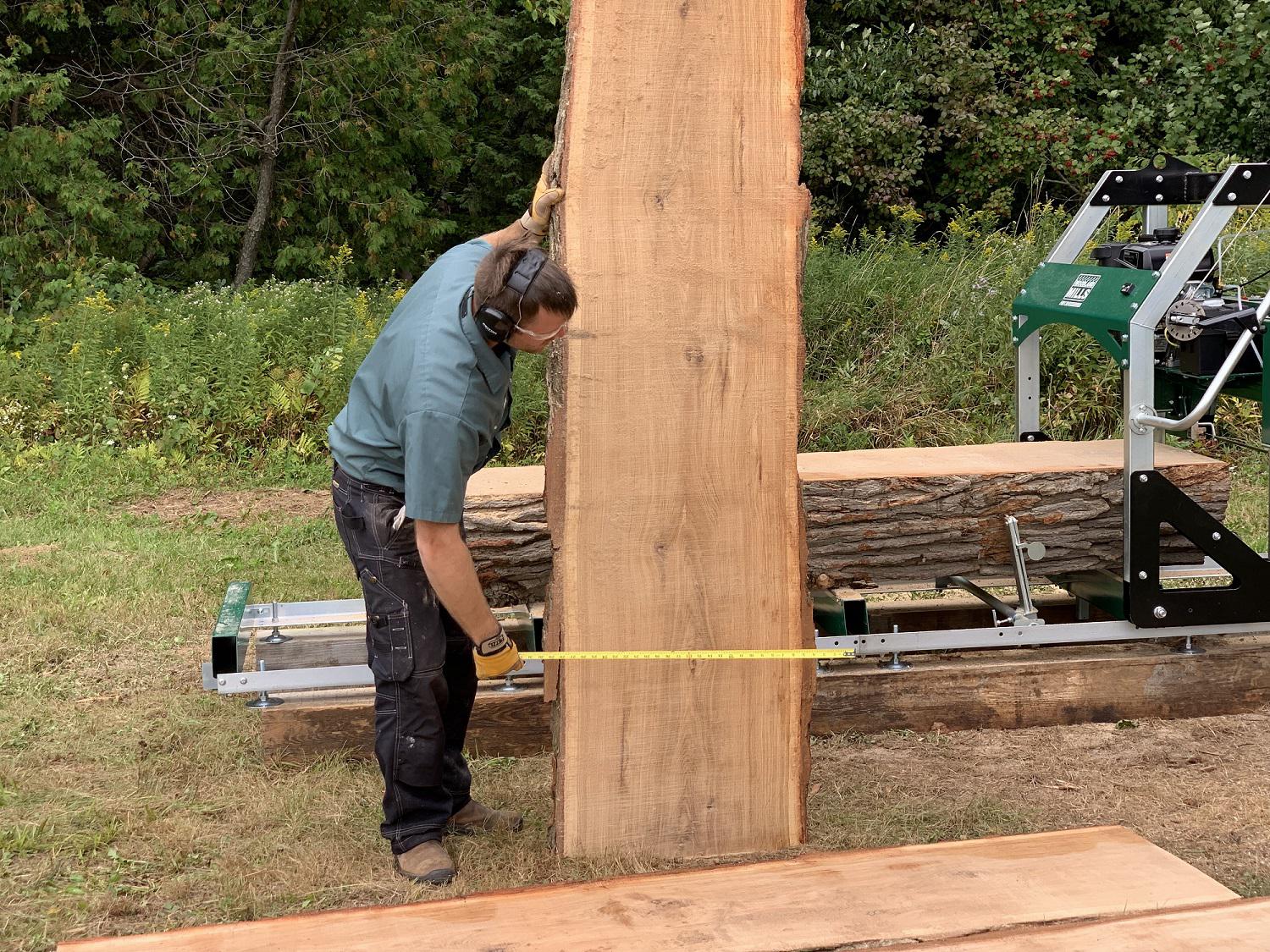
Whether you’re managing forested acreage, milling attractive live-edge slabs for furniture building, or just doing some hobbyist woodworking of your own, there are likely several pieces of forestry equipment you’ve come to rely on, like a bandsaw sawmill or wood chipper.
Rugged and dependable as they may be, it’s vital that you diligently and regularly maintain this gear to keep it in good working order.
You don’t need to be a mechanical engineer to carry out maintenance work. But a bit of know-how is a bonus, and at a minimum, you should use the resources at your disposal to answer questions—whether it’s an online how-to video, an owner’s manual, or a phone call to your knowledgeable neighbor.
This guide will help you answer five common questions about maintaining your forestry equipment so you can take on your next project with confidence.
What Qualifies as Maintenance?
Is taking a minute or two to clean out your wood chipper really a task that qualifies as preventative maintenance? What about checking the belt tension on my portable sawmill?
Whether your brother-in-law at the mechanic’s shop thinks cleaning and double-checking are intensive enough processes to qualify as maintenance with a capital M, these are tasks you should perform regularly. If you consider that your equipment won’t operate correctly with debris gumming up the works, then yes, of course, cleaning out your wood chipper qualifies as maintenance. But either way, don’t let these smaller, less involved tasks fall by the wayside.
Do I Need to Build a Schedule?
If you only use a chainsaw, bandsaw mill, or stump grinder, with no other equipment to worry about, then you probably don’t need to line out a schedule or put together a spreadsheet.
On the other hand, if you have several wood chippers, trailers, and a tractor in your shop, it’s best to be on the safe side and put your important maintenance work on a schedule. If you prefer to go old-school with pencil and paper, have at it. But there are also a number of apps available to help you keep the schedule straight—they’ll even send you reminders so nothing falls through the cracks.
Which Equipment Should I Prioritize?
In short: If you use it, it’s a priority.
It’s natural to keep a closer eye on the equipment you use most often. If that stump grinder is essential to your day-to-day, you’d best be sure it’s ready to go before you call it a day.
By the same token, if you find yourself in need of a backup chainsaw only to find that the chain is dull or your oil reservoir is leaking, you could lose an entire day of productivity. That’s why it’s best to regularly perform preventative maintenance on all your gear.
What Parts Should I Keep on Hand?
Most preventative maintenance starts with consumables. Think bandsaw blades, wood chipper teeth, and sawmill parts. If your budget allows, it’s best to keep a full set of replacement consumables on hand, just in case. For example, if your stump grinder uses 34 tungsten carbide cutting teeth, you’d want to have a full set of 34 teeth in reserve.
Remember, be sure to order new backup parts as you replace consumables on your forestry equipment. It might sound obvious, but you’d be surprised at just how often folks replace a belt or blade, then forget to order a replacement.
When Should I Perform Maintenance Tasks?
Maintain your equipment regularly, in accordance with the owners’ manuals for each piece of gear. How you fit this into your schedule is up to you—it may be best to carve out time for maintenance on a Saturday, or perhaps weekday afternoons are easier for you.
Keep in mind, it’s better to be ahead of schedule than behind. Most folks would rather replace a belt during established maintenance time—even if the belt has a few hours left on its lifespan—instead of having to stop milling for the day because the belt finally called it quits.
About Woodland Mills
All over the world, sawyers, landowners, and hobbyist woodworkers alike turn to Woodland Mills for the best-valued forestry products in the industry. From the flagship HM126 portable bandsaw mill to capable PTO wood chippers and the new Loglander log arches, Woodland Mills carefully designs practical solutions for a variety of applications. Whether you’re milling at the source with one of their portable bandsaw sawmills or turning troublesome brush into wood chip mulch with a 3 point wood chipper, you’ll be glad to have Woodland Mills in your corner. No matter which project you tackle next, you can always count on quality forestry equipment at an affordable price point and simply peerless customer service from the fine folks at Woodland Mills.
Get all your Woodland Mills sawmill parts and accessories at https://www.woodlandmills.com/
Original Source: https://bit.ly/3NNE3Ca